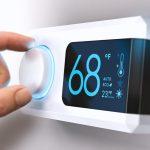How to Safely Tackle Home Projects
How to Safely Tackle Home Projects
How to Safely Tackle Home Projects. When contemplating home upgrades or building projects, contractors and DIYers alike focus on factors such as budget, scheduling, and materials. Another important consideration before starting work on any project – from renovating a main living area to expanding a bathroom or transforming your outdoor space – is safety. (Family Features)
While having properly functioning tools is crucial to completing projects both big and small, proper handling and transportation of power tools and batteries can sometimes be overlooked. Due to their efficiency, energy storage capabilities, convenience, and durability, lithium-ion battery-powered tools are a popular choice for taking care of task lists of all sizes but must be handled correctly.
With members representing portable and stationary power tool brands, the experts at the Power Tool Institute – the leading organization for power tool safety resources, information, and education – recommend these tips for safe use, storage, transportation, and disposal of lithium-ion batteries.
Use:
- The higher energy potential and small size of lithium-ion batteries make them ideal for cordless power tools but also pose additional safety risks when misused.
- Batteries are not interchangeable, so it’s important to only use batteries and chargers from the original power tool manufacturer.
- Original manufacturer batteries are engineered to communicate and work with specific tools and chargers. These components go through a rigorous certification and testing process. Third-party batteries are not always held to the same standard and can pose fire, property damage, or personal injury risks.
- Never modify, disassemble, or tamper with a battery. The performance of damaged or modified batteries can be unpredictable and dangerous.
- If a lithium-ion battery is damaged, contact the manufacturer before use.
- Never immerse your tool, battery pack, or charger in fluid or allow fluid to enter it
Storage and Transportation:
- Inspect batteries regularly for signs of damage, such as crushing, cuts, or punctures.
- Store your battery in a cool, dry place, away from combustible and flammable items.
- Avoid contact with metal objects, such as keys, coins, screws, and nails.
- Always transport and store lithium-ion batteries as instructed in the owner’s manual.
Disposal:
- Throwing a lithium-ion battery in the trash or municipal recycling can be a fire hazard.
- Safely dispose of used or damaged lithium-ion batteries by taking them to a local battery recycling center or placing them in a receptacle specially designed for recycling batteries.
Find more information on safe battery use at TakeChargeOfYourBattery.com, or visit PowerToolInstitute.com for additional power tool safety and operation tips.
Photo courtesy of Getty Images
SOURCE:
Power Tool Institute
Crunchy Jalapeno Potato Poppers
Surbroadcast Exclusive Domain Names
https://ardelles.com/crunchy-jalapeno-potato-poppers/
Originally posted on June 19, 2019 @ 4:27 pm











